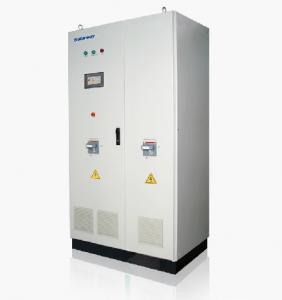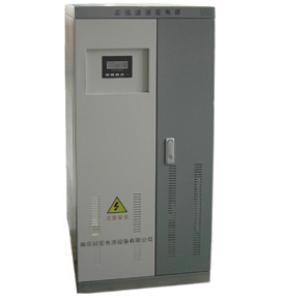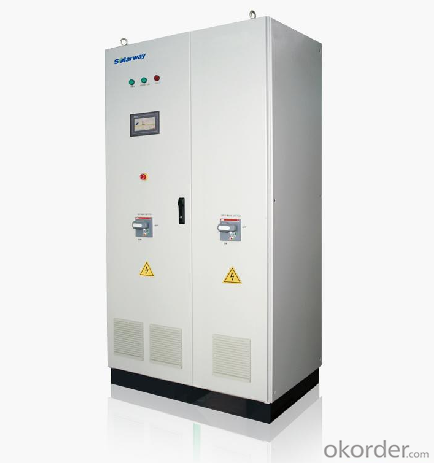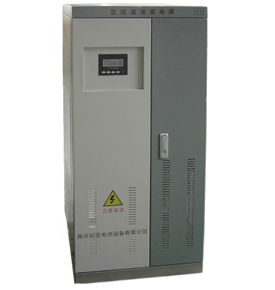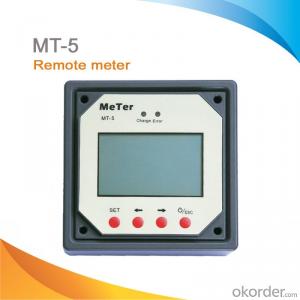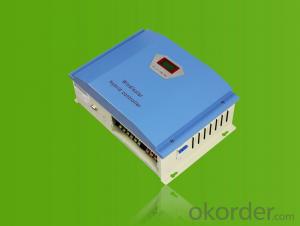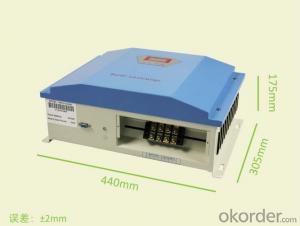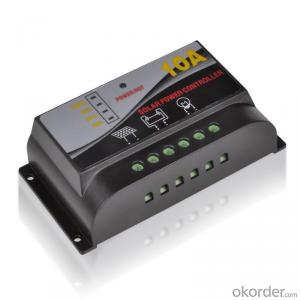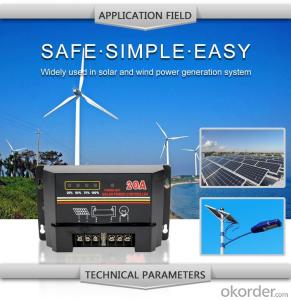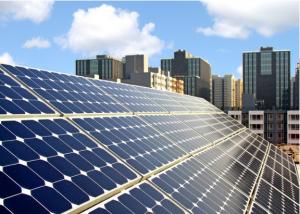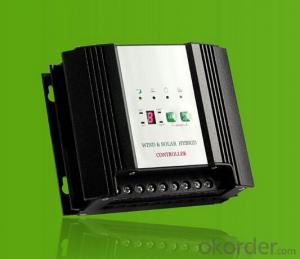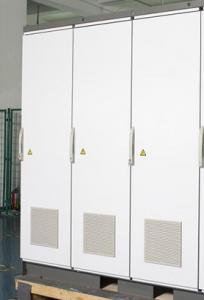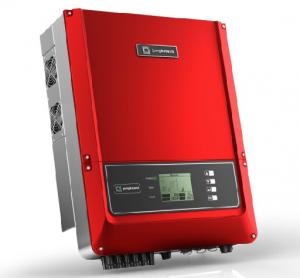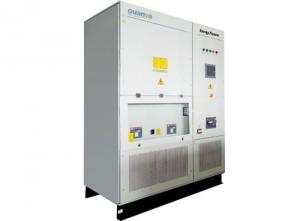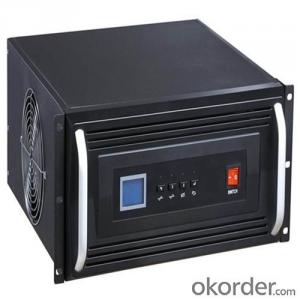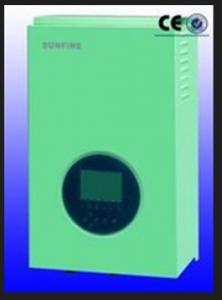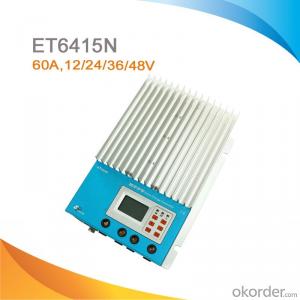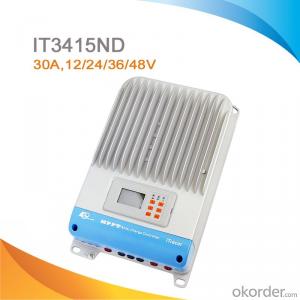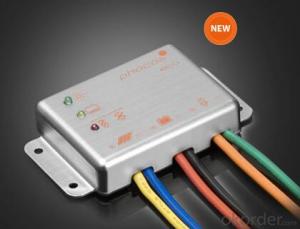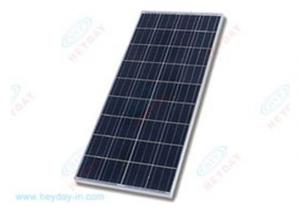PV Off-Grid Inverter GN-10/20/30/40/50KF Switch Box for Solar Controllers from CNBM
- Loading Port:
- China Main Port
- Payment Terms:
- TT or LC
- Min Order Qty:
- -
- Supply Capability:
- -
OKorder Service Pledge
OKorder Financial Service
You Might Also Like
Description:
CNBMSOLAR is a world-leading and Vertical integrated manufacturer of high-performance with Silicon,
Wafer, Cells, Modules, which convert sunlight into electricity for residential, commercial, and utility-scale
power generation.
The capacity of CNBMSOLAR is reach to 1GW, and make sure each year our shipment capacity is more
Than 700-800MWs, at the same time, we have set up the largest solar power station with our partner
in Ukraine.
CNBM is a Quality + Service oriented company with“Excellence at Each Step” approach, composed of
the finest components from TUV and IEC-certified partners around the world, CNBM modules consistently
undergo a variety of trials at the company’s Test & Development Centre, ensuring peak performance
capabilities. The company is committed to develop and provide the world with clean and renewable energy
to ease the energy shortages as well as human kind’s impact on the environment.
Data:
Rated Capacity(Kva) | 1(KVA) | 3(KVA) | 5 (KVA) | ||
Dc Input | Rated Voltage(Vdc) | 48.0(VDC) | 48.0(VDC) | ||
Low Voltage(VDC) | 43.2(VDC) | 43.2(VDC) | |||
Low Voltage Resume (VDC) | 50.4(VDC) | 50.4(VDC) | |||
Load Overvoltage(VDC) | 60.0(VDC) | 70.0(VDC) | |||
Load Overvoltage Resume(VDC) | 58(VDC) | 66(VDC) | |||
Grid Input | Input Voltage Range | ---------- | 220±15﹪ (VAC) | ||
Input Frequency | ---------- | 50±1(Hz) | |||
Switching Mode | ---------- | 00、21、22 | |||
Switching Time | ---------- | ≤10(ms) | |||
Ac Output | Output Waveform | sine wave | sine wave | ||
Overload Ability | ---------- | 120% 1min | |||
Output Voltage | ---------- | 220±3%(AC) | |||
Output Frequency | ---------- | 50±0.04(Hz) | |||
THD | ---------- | ≤3℅ (THD) | |||
Dynamic Response(0~100%) | ---------- | 5% | |||
Inverter Efficiency | ≥85% | ≥80% | |||
Crest Coefficient(CF) | 3:1(CF) | 3:1(CF) | |||
Continuous Running Time | Continuous running | ||||
Display | LCD | LCD | |||
Content | ---------- | DCvoltage, dc current, voltage, utility line frequency, output voltage, output current, output frequency, output power | |||
Communication Interface | no | RS232 | |||
Lightning Protection Device | no | ||||
Protection | Overcharge, Overdischarge, Overload, Short Circuit, Reverse Polarity, Internal Overheated Protections,Etc | ||||
Reference Dimensions(D\W\H Mm) | 380*340*143 | 500*483*267 | 550*480*800 | ||
Reference Weight(Kg) | 32 | 68 | 128 | ||
Protection Class | IP20 | ||||
Environment | Noisy(Db、1meter) | ≤50(dB、1m) | |||
Operating Temperature(℃) | -10~+50(℃) | ||||
Operating Humidity | 0~95%(No condensation) | ||||
Operating Alititude | ≤5000(m) | ||||
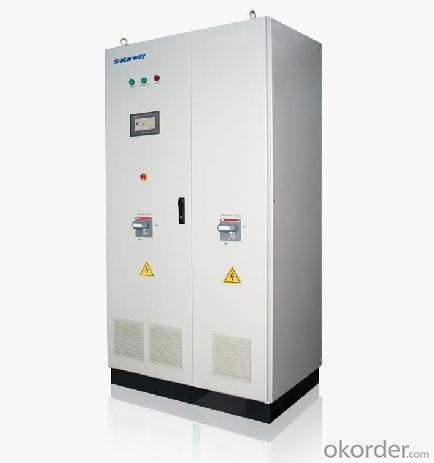
FAQ:Pls introduce more about CNBM
CNBM Group is short for China National Building Materials Group Corporation, which is established in 1984 with approval from the State Council
CNBM Group is the largest comprehensive building materials industry group in China
The Group has a total asset of over RMB 360 billion, more than 180,000 employees and 17 subsidiaries
- Q: Can a solar controller be used with a solar-powered biomass plant?
- No, a solar controller cannot be used with a solar-powered biomass plant. A solar controller is designed specifically for regulating and optimizing the performance of solar panels and batteries. It is not compatible with the unique requirements and systems of a solar-powered biomass plant, which involves the conversion of organic matter into energy through combustion or other processes. Different control systems and mechanisms are needed to effectively manage and control the biomass plant's operations.
- Q: What is the maximum power handling capacity of a solar controller?
- The maximum power handling capacity of a solar controller varies depending on the specific model and brand. However, high-quality solar controllers typically have a maximum power handling capacity of around 60 to 100 amps, allowing them to handle up to several thousand watts of solar power.
- Q: What is the role of a solar controller in preventing battery stratification?
- The role of a solar controller in preventing battery stratification is to regulate the charging process of the battery. It ensures that the battery is charged evenly and prevents overcharging, which can lead to stratification. By monitoring and adjusting the charging voltage and current, the solar controller helps maintain a consistent charge across the battery, preventing the accumulation of acid at the bottom and water at the top. This helps to prolong the battery's lifespan and optimize its performance.
- Q: Can a solar controller be used with solar panels of different sizes?
- Yes, a solar controller can be used with solar panels of different sizes. The role of the solar controller is to regulate the charging and discharging of the batteries, and it is compatible with a range of solar panel sizes and configurations. However, it is important to ensure that the solar controller is appropriately sized and can handle the maximum voltage and current of the connected solar panels.
- Q: Can a solar controller handle varying environmental conditions?
- Yes, a solar controller is designed to handle varying environmental conditions. It is built to withstand extreme temperatures, moisture, and other environmental factors that are commonly experienced in outdoor settings. Additionally, solar controllers are equipped with protective measures to ensure reliable operation even in challenging conditions.
- Q: Can a solar controller be used with a solar-powered recreational facility?
- Yes, a solar controller can be used with a solar-powered recreational facility. A solar controller regulates the flow of electricity from the solar panels to the battery bank, ensuring efficient charging and preventing overcharging or damage to the batteries. It is an essential component in managing the power supply for a solar-powered facility, including recreational facilities such as campsites, sports complexes, or outdoor activity centers.
- Q: How do I determine the maximum load output current for a solar controller?
- To determine the maximum load output current for a solar controller, you will need to consider a few key factors. Firstly, check the specifications provided by the manufacturer of the solar controller. This information is usually available in the product manual or on the manufacturer's website. Look for the maximum load output current rating, which is typically given in amps (A). Additionally, consider the size and capacity of your solar panel system. The maximum load output current of the solar controller should be compatible with the capacity of your solar panels. If your solar panels have a higher output current than the controller's maximum load output current, it may lead to system inefficiencies or potential damage. Moreover, it is important to consider the load you intend to connect to the solar controller. Determine the maximum current that the load requires to operate properly. Ensure that the load's current requirement is within the range supported by the solar controller. If the load's current requirement exceeds the maximum load output current of the controller, it may result in the overload or malfunctioning of the controller. Lastly, always consult with a professional or an electrician experienced in solar systems if you have any doubts or concerns. They can provide valuable advice based on your specific system requirements and help ensure that the solar controller is properly matched with the load and solar panel capacity.
- Q: What is the maximum temperature range a solar controller can operate in?
- The maximum temperature range a solar controller can typically operate in is between -40 degrees Celsius to 85 degrees Celsius.
- Q: How does a solar controller handle voltage drops in the wiring system?
- A solar controller regulates and manages the voltage output from solar panels. When there are voltage drops in the wiring system, the solar controller automatically adjusts the voltage to maintain a consistent and optimal level, ensuring efficient power transfer and preventing any potential damage to the connected devices or batteries.
- Q: Can a solar controller be used with solar panel ground fault detection systems?
- Yes, a solar controller can be used with solar panel ground fault detection systems. A solar controller is responsible for regulating the voltage and current flow from the solar panels to the battery or grid. It ensures that the solar panels are operating at their maximum efficiency and keeps track of the charging process. On the other hand, a ground fault detection system is designed to detect any ground faults or leakage currents in the solar panel system. It monitors the electrical connections and detects any abnormalities that may pose a safety risk. In most cases, the solar controller and ground fault detection system work independently of each other. The solar controller focuses on optimizing the energy production and storage, while the ground fault detection system focuses on ensuring the safety of the system. However, it is possible to integrate the two systems together. Some advanced solar controllers may have built-in ground fault detection capabilities or can be connected to an external ground fault detection system. This integration allows for more comprehensive monitoring and protection of the solar panel system. In conclusion, while a solar controller and a ground fault detection system serve different purposes, they can be used together to enhance the overall performance and safety of a solar panel system.
Send your message to us
PV Off-Grid Inverter GN-10/20/30/40/50KF Switch Box for Solar Controllers from CNBM
- Loading Port:
- China Main Port
- Payment Terms:
- TT or LC
- Min Order Qty:
- -
- Supply Capability:
- -
OKorder Service Pledge
OKorder Financial Service
Similar products
Hot products
Hot Searches
Related keywords
